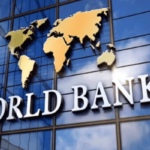
World Bank Calls on Nigeria to Audit NNPC for Greater Oil Revenue Transparency and to Maintain Economic Reforms
October 18, 2024
Bangladesh Court issues arrest warrant for former leader Sheikh Hasina.
October 18, 2024Gross domestic product grew by 4.6% compared to the previous year, missing the government’s target of “around 5%.”

China’s economy grew at the slowest pace since early 2023 in the third quarter, struggling to recover momentum. According to the National Bureau of Statistics, China’s gross domestic product (GDP) increased by 4.6% annually in the three months ending in September. This marked a decline from the previous quarter and fell short of the government’s target of “around 5%” for the year. However, the figure was slightly better than analysts had predicted. Other economic indicators, such as retail sales and factory output, also surpassed expectations.
Despite these modestly positive results, Beijing has implemented various measures to support economic growth, reflecting concerns over the ongoing slowdown. This is the second consecutive quarter where economic growth has missed the government’s target, heightening fears about achieving the full-year goal. Eswar Prasad, former head of the IMF’s China division, noted that the government’s growth target is now in serious jeopardy. He added that a significant stimulus effort would be required in the fourth quarter to meet the 5% goal.
Some experts, however, are more optimistic about the effectiveness of recent government measures. Harry Murphy Cruise, an economist at Moody’s Analytics, believes the stimulus could still drive the economy toward the target by the year’s end. Nevertheless, he emphasized that additional efforts would be necessary to tackle China’s deeper structural challenges, which are holding back more sustainable growth.
One of the major factors dragging down the economy is the worsening property market. September saw home prices fall at the fastest rate in almost a decade, underscoring the severity of the crisis. ING’s Chief Economist for Greater China, Lynn Song, remarked that the property sector continues to be the largest obstacle to growth. She pointed out that real recovery in the sector would not be possible until prices stabilize and the oversupply of housing inventory is reduced.
In response to the mounting economic difficulties, China’s central bank has urged banks and financial institutions to increase lending. Last month, the People’s Bank of China (PBOC) rolled out its largest stimulus package since the COVID-19 pandemic, which included significant cuts to interest and mortgage rates. The measures were designed not only to boost lending but also to reinvigorate the flagging stock market. Since then, the Ministry of Finance and other key government agencies have introduced further plans aimed at restoring growth.
Despite these efforts, China’s economy faces numerous challenges, including the property downturn, and weakening consumer and business confidence. Addressing these issues will require more than just short-term financial stimuli; fundamental reforms and strategic changes may be necessary to foster a more balanced and sustainable recovery.
In sum, while the third-quarter GDP growth was slightly better than expected, it still reflects the broader difficulties facing China’s economy. The government’s ambitious growth target appears increasingly difficult to achieve without further aggressive interventions, and key structural issues, particularly in the property market, continue to act as a significant drag on progress. The coming months will be critical as Beijing tries to navigate these challenges and maintain confidence in the world’s second-largest economy.


